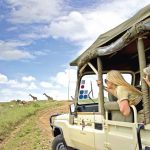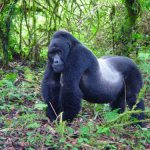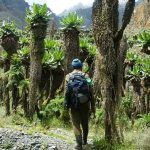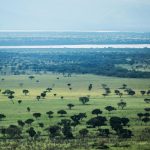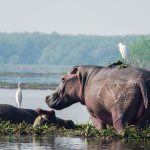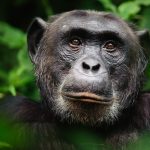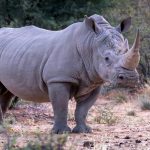 Straddling in the jagged semi-arid valleys between Uganda-South Sudan-Kenya border and was established into a National Park in 1962. This remote National Park receives less tourists (when compared to other National Parks) making it a must-visit for tourists who desire genuine and unblemished destinations that offer a true African Wilderness. Kidepo National Park is situated at 700 kilometers/10-13 hours drive from Kampala City hence very tiring to reach. It is advisable to fly-in (which is expensive) or you endure with the long hours to drive to experience what other National Parks nearer and more accessible cannot offer you.
Straddling in the jagged semi-arid valleys between Uganda-South Sudan-Kenya border and was established into a National Park in 1962. This remote National Park receives less tourists (when compared to other National Parks) making it a must-visit for tourists who desire genuine and unblemished destinations that offer a true African Wilderness. Kidepo National Park is situated at 700 kilometers/10-13 hours drive from Kampala City hence very tiring to reach. It is advisable to fly-in (which is expensive) or you endure with the long hours to drive to experience what other National Parks nearer and more accessible cannot offer you.

This beautiful National Park boasts spectacular landscapes and large populations of mammals. There are over 77 mammal species and 475 exceptional bird species that call Kidepo Valley National Park home. Animals within this National Park are all in abundance, the prides of lions are exceptional (especially during the dry seasons), and the elephants and buffaloes linger within a closer range. The leopards, cheetahs, Ostriches, Wild dogs, Pangolins, Aardwolf, Caracal, hunting dogs and bat-eared fox are some of the mammal and bird species only found within Kidepo Valley National Park. Other wildlife species within Kidepo Valley National Park include Antelopes such as Defassa waterbucks, Elands, Oribis, Reedbucks, Jackson’s hartebeests, bush duikers, bush bucks and Topis among others. The extraordinary bird species within this Park include the Karamajong Apalis and the raptors among others. The following are the interesting activities conducted within Kidepo Valley National Park.
Location
The park is hidden in a valley in North Eastern Uganda along the border with Sudan. Surrounded by mountains it is considered by many to offer the most stunning scenery of any national park in Uganda.
This savannah remote park is located north-eastern Uganda of Moroto district (Karamoja region).
Size
The 1,436sq km park with mountain landscapes which end in rugged horizon, offers some of the wildest and most chartered flights available from Entebbe International Airport.
How to get to Kidepo Valley National Park
Drive through Soroti-Moroto road and you will be amazed by excellent views over the steep Alekilek volcano about midway Moroto and Soroti. And if you take the Lira-Kotido road, expect to enjoy the scenery of the Labwor hills and in particular the massive and bare Alerek (Kidi Rwot) rock about 55 km to Kotido.
Things to See in Kidepo National Park
Kidepo Valley National Park was founded in 1962 to offer refuge to its diverse wildlife species including over 77 mammal species, 475 bird species most of which can be best explored while you are on safari in Uganda. They include leopards, kudus, buffalo, cheetah, elephants, giraffes, Oryx, bush baby, lions, Uganda Kobs and many others.
Wildlife in the Park

Kidepo valley national park is blessed with a number of wildlife species that include the cape buffaloes, lions, zebras, gazelles, hyenas, cheetahs, crocodiles, wild dogs that usually come from southern Sudan and go back after some time, elephants, jackals, giraffes, hartebeests plus a number of bird species that include barbets, vultures, eagles and many others.
The park is notable for a number of animals that are not found anywhere else in Uganda including Cheetahs, Ostriches and bat-eared foxes.
Five primates have been recorded in the park including the localized Patas monkey. It also has large concentrations of elephants, zebras, bushbucks, buffaloes and a number of 20 predators including Lions, Leopards and hyenas .There’s also a variety of mustelids, genets, mongooses and small cats.
Twelve antelopes are found in Kidepo and they include the greater and lesser kudu, Guenther’s dik- dik, and mountain reedbuck which occur nowhere else in Uganda. Others are Jackson’s Hartebeest, Eland, Bushbuck, common duiker, Klipspringer, Oribi, Defassa waterbuck and Bohor reedbuck. The park also supports populations of elephant, Burchell’s Zebra, Warthog, Bush pig and buffalo. The black rhinoceros recently became extinct in kidepo.It’s also a good bird – watching destination, with a recorded number of 463 birds which includes endemic birds,%6 raptors including the pigmy falcon and Kidepo “specials” which are restricted to the park.
Most of the wild animals in the national park are easily seen in the Narus valley because it’s the only place that usually has water even during the dry season therefore the major herbivores usually keep around this area to feed on fresh grass and the major predators like the lions and hyenas also stay in the valley to hunt what they will have for their meals.
The Morungole Mountain
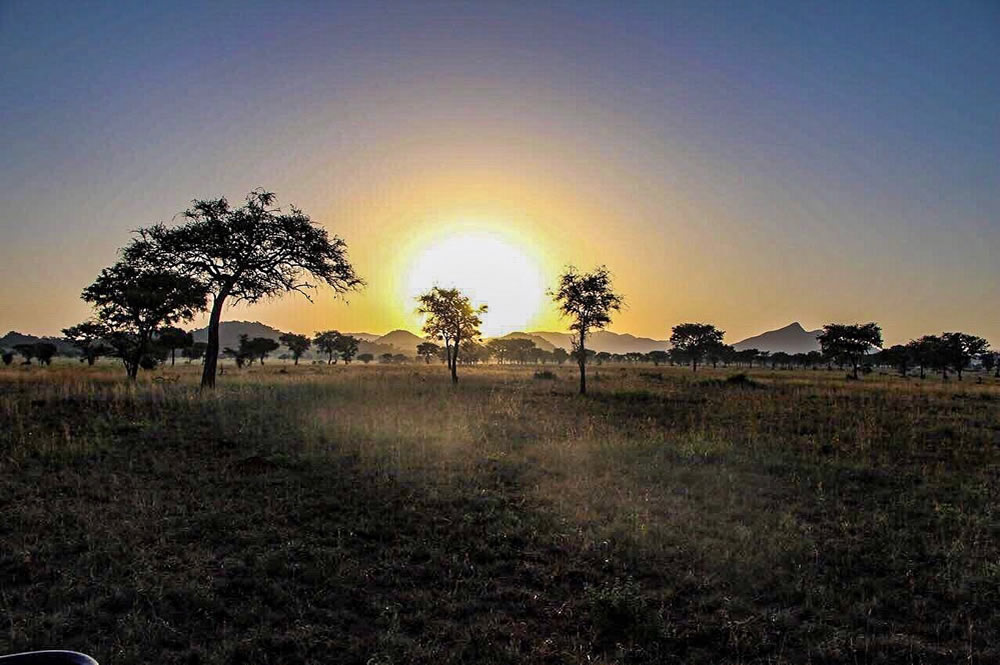
For all the adventurous tourists interested in hiking, Kidepo valley national park is also a very good tourist destination for mountain hiking, especially around the Morungole mountain. Hiking this mountain provides great views of the surrounding environments and there no need to fear as hikers are usually protected by armed rangers.
The Narus Valley

Being the only place with water even during the dry season, the Narus valley is one-place tourists’ in Kidepo valley national park should not miss visiting. While here, tourists will not miss seeing the major animals in the national park.
Things to Do in Kidepo National Park
Safaris in the Park
The beautiful national park though rarely visited has a wonderful scenic viewing, game viewing, visit to the hot springs, hiking on Morungole Mountain, bird watching, community walks while learning the ancient customs and beliefs of the karimojong people and dancers.
Guided Nature walks
This Park offers the most breathtaking opportunities for nature walks. There is no great experience as exploring the African wilderness on foot and no great destination offers that experience except the Kidepo Valley National Park. Besides doing it within the National Park, nature walks can be done from outside the Park such as hiking to Late Idi Amin’s dream Lodge that he never fulfilled his dream while still the President of Uganda. All nature walks within Kidepo Valley National Park are conducted with the guidance of Uganda Wildlife Authority Rangers for security against stray animals, and short nature walks take one hour to Namamukweny Valley-the perfect birding spots in the National Park. Hikes can also lead to Lomej Mountains, by walking gently through the Narus Valley where you will meet the endangered Ik people.
Bird watching
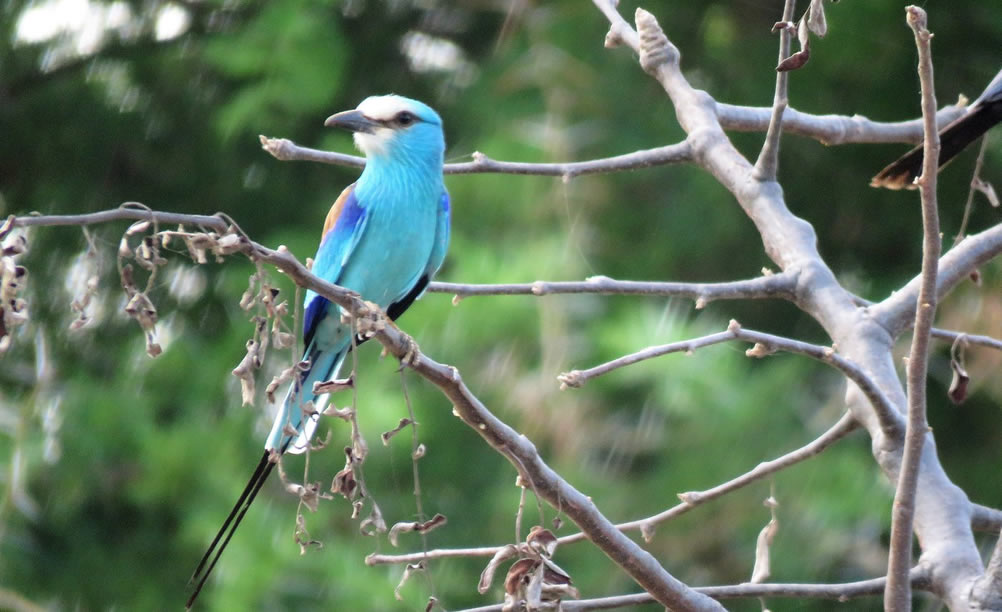
Birding within Kidepo Valley National Park is very worthwhile and guided by the National Park’s numerous habitats which offer both permanent and temporary shelters to more than 475 bird species and you will be able to sight at least 100 of bird species that include 56 recorded species of birds of prey such as the Verreaux’s Eagles, Pygmy Falcon, Ostriches and Egyptian Vultures. Other bird species include Ostriches, Handsome franc0lins, and the world’s largest and heaviest bird of flight-the Kori bustard is also found in Kidepo Valley National Park. Other bird species to look out for include the Purple Heron, Abyssinian Roller, Green Wood Hoopoe, the Common Bulbul, buffalo weavers, black-breasted barbets and White-crested Turaco among others. Apoka Rest Camp is also a significant place to start your incredible bird watching experience.
Game drives

There are well-developed game driving trails that are usually followed by tourists to view the major wildlife species in the national park. Important to note is that remarkable and most rewarding game drives are usually carried out in the Narus valley because of the different wildlife species present there.
The park has well maintained game tracks where tourists can encounter the true African wilderness without the large crowds as it is with other National Parks. Game drives have to be done with UWA Park Ranger in your vehicle because rangers know where to spot the wildlife species of interest such as Lions. Other prominent wildlife species within the Wild Narus Valley that you will spot during game drives include large herds of Buffaloes, Elephants, Giraffes, Burchell’s Zebras, Bush duikers, Leopards, Jackals and Bush pigs among others. Game drives within this Park start at 6:30 am to spot the early risers or late Afternoon at 4:00pm
Karamajong village walks

There are several Karamajong settlements that surround Kidepo Valley National Park. The Karamajong People are generally warriors and considered primitive and backward by the other tribes in Uganda. These people greatly take pride in their Cattle, and treat them as their second god after Akuj their god-who gave them total authority over all the cows which explains why there are continuous cattle raids among the Karamajong and other tribes like the Masai (of Kenya). Karamoja is a semi-arid region where the locals have to move for miles to get water, and these “primitive”-as they are referred have just started embracing substinence farming much as they are generally nomads.
Climbing mount Morungole (to visit the Ik people)
Climbing Mount Morungole to visit the Ik people-one of the native tribes of North-eastern Uganda needs to be done early morning. The Ik people are believed to have occupied the areas within Kidepo Valley long before the Karamajong people even invaded their land. There are currently only 10,000 Ik people and several facts seem strange, funny but true about them. Polygamy is a common practice among members of this tribe and bride price is paid inform of bee hives and goats. Do you believe that the first University student to come from this tribe is currently admitted at Kampala International University (KIU)? She has become a center of attention because of her exception and the tribe sent the First Representative in Parliament (in the 10th parliament).
Safari Planner
Best Time To Visit
This national park can be visited at any time of the year however the major wildlife species in the national park can be best viewed during the dry season (between July and August) when most of them gather around the Narus valley.
Getting There
Kidepo valley national park is located over 600 kilometers from Kampala and getting there by road may take about 10 hours or more. Most tourists who go there by road some times have a stop over for an overnight and proceed to the national park the next day while others use charter planes from Entebbe international airport or Kajjansi airstrip to Lomej airstrip taking about 2 hours.
Where to Stay
Are you planning to take a safari to Kidepo Valley National Park, and worried about accommodation? This article will make it easy for you to choose what accommodation facilities to choose from. The following are the accommodation facilities within Kidepo Valley National Park. The major accommodation facilities in this national park include Apoka safari lodge that offers luxury services, Kidepo safari lodge, and Apoka rest camp for budget tourists.
Apoka Safari Lodge

This Luxury lodging facility is the only L0dge found in the Heart of Kidepo Valley National Park, in the center of the Narus Valley. It is made up of 10 immense Tented rooms with floors made of hardwood and woolen carpet, vast hand-hewn beds with mosquito nets and duvets, en-suite bathrooms, dressing gowns, solar-heated running water in the bathrooms and state of art furniture situated around a captivating rock kopje and each with the most astonishing views across the savannah plains to the ragged mountains in the distance. There are also outdoor bathtubs that are engraved from the rock face to maximize the chance of relishing the breathtaking views of the surrounding areas. Some of the facilities available at the Lodge include a spacious restaurant that serves some of the moist delicious meals, a lounge with a collection of wildlife and fashion books/magazines, a swimming pool for relaxation
The most interesting thing about this Lodge is that it is sometimes visited by the residents of the National Park especially the Buffaloes, Elephants, Giraffes, jackals, giant forest hogs, zebras and several antelopes among others.
For reservations and inquiries, contact them at +256 414 251182, +256 776 707004 and +256 772 489497 or reach them through their website at www.wildplacesafrica.com/apoka-lodge
Apoka Rest Camp

This facility is situated inside Kidepo Valley National Park, at the Narus Valley-perfect for nature walks, sightseeing and game drives with several wildlife such as lions, zebras and buffaloes and is managed by the Uganda Wildlife Authority.
Apoka Rest Camp is comprised of 16 self-contained cottages, which include 14 Bandas self-contained with each having 2 beds and 2 campsites for tourists interested in feeling the real touch of the wilderness. However, tourists are advised to carry their own tents and other camping gear. Visitors to Apoka Rest Camp are advised to carry their own food that will last for all the days within the Park since the Rest Camp only offers accommodation without food or drinks. Nevertheless, the staff of the Camp can organize for cooking with several additional diets like Chicken and goat meat from the nearby communities. There are several toilets outside the cottages and Bandas. Some of the activities to enjoy within Apoka Rest Camp include visit to the local Karamajong homesteads, game drives, guided nature walks and birding among others.
The Rest Camp can be contacted on +256 312 355000, +256 414 355000 or +256 392 899500 for more information and bookings.
Kakaine Self-catering Campsite
This Campsite is also rum by the Uganda Wildlife Authority and provides comfortable campsites without meals; therefore tourists need to carry their own food. For more information, and for bookings, call the management on +256 312 355000 or +256 392 899500.
The Accommodation facilities outside Kidepo Valley National Park include;
Nga’ Moru Wilderness Camp

This mid-range facility is found on a hill at the border of Kidepo Valley National Park and rewards tourists with the mind-blowing views of the Narus Valley-home to a number of wildlife species and the vast savannah plains spanning to the high Morungole Mountains. Nga ‘Moru is locally translated as a “place of rock” and is your place to be for relaxation and sighting of spectacular wildlife species. There are two Cabanas and Safari Tents beneath thatch with a serene atmosphere, and is a fallboard Lodge with delicious meals and comfortable rooms in the true African wilderness of Kidepo Valley National Park.
For bookings and inquiry, call them at +256 772 448844 or +256 754 500555 and +256 785 551911 or send an email to fuglys.limited@gmail.com or access their website on www.ngamoru.com.
Therefore, if you are planning for wildlife safaris in Kidepo Valley National Park, you can choose from Apoka Safari Lodge for luxury accommodation, Apoka Rest Camp, Kakaine Self-catering Campsite and Nga’ Moru Wilderness Camp to complement your safari and make your stay memorable.
Things to see in Mgahinga National Park

Mgahinga National Park offers refuge to 76 mammal species including the rare mountain gorillas that make up part of 1004 individuals that still thrive on earth today. Besides, there are also elephants, buffaloes, golden monkeys, spotted hyenas, black fronted duikers, giant fronted hogs, bushbuck and not to forget over 115 bird species.
Virunga Volcanoes

It makes up part of the mighty Virunga Conservation Area (VCA) that also comprises of Volcanoes National Park in northwestern Rwanda and the Virunga National Park in eastern DR Congo. Mgahinga Gorilla National Park straddles between elevation 2227 meters and 4127 meters comprising of Virunga Massifs like Gahinga where it derived its name and this straddles at altitude of about 3474 meters, Muhabura at 4127 meters and Sabyinyo volcano at 3645 meters. This park was gazetted in 1991 as a national park mainly to offer refuge to its diverse natural wonders.
Mount Sabyinyo (3669m)

The ‘Old man’s teeth, like an old man, the time has weather-beaten Mt. Sabyinyo’s crown. Seeing the ‘Old man’s teeth on the top of Mt Sabinyo is another superb exploration. This volcano has 3 challenging peaks to climb. Climbing the mountain takes one up an edge along the eastern side of the climb to the peak. If you are to continue, the climb to peak 11 involves walking a ridge with breath-taking drops into the gorges of Rwanda and Uganda, a dual experience you will achieve here and enjoy. And the hike up to peak 111 is steep with several ladders and mush scrambling. Your hands have to get dirty en-route to peak111! But once you reach the top, you will be in Rwanda, the Democratic Republic of Congo, and Uganda, what a triple memorable experience this one is!!! The journey takes about eight hours round trip to cover the 14km stretch.
Mount Gahinga (3474m)
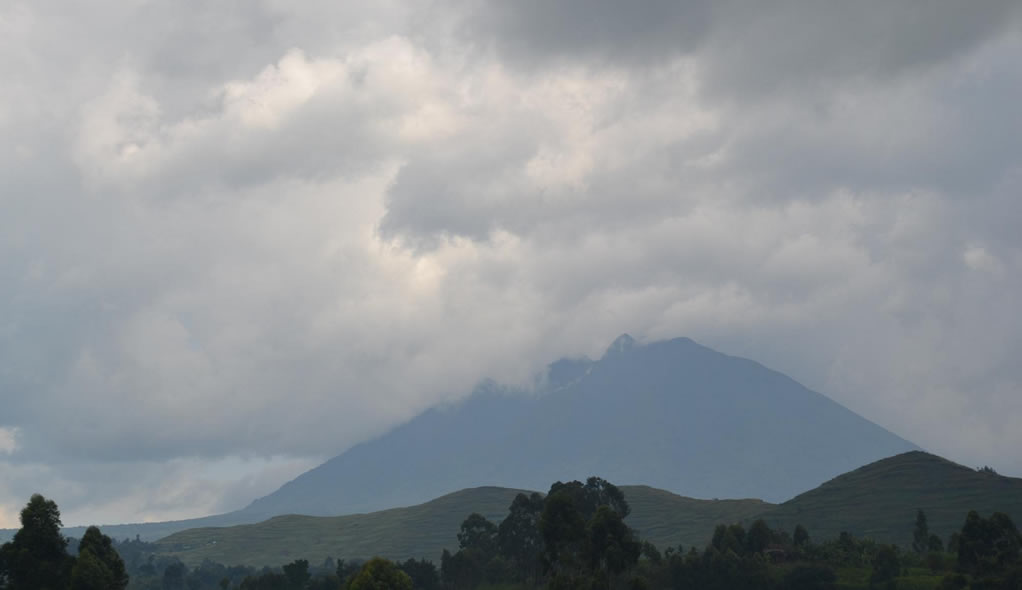
As you are on your way to the park, you will come across small piles of stones in the garden fields locally known as ‘Gahinga’. Mount Gahinga is pretty bigger than the average ‘Gahinga’ but sitting next to Mount Muhavura makes it turn out to be visibly small. Here, a six-hour hike round expedition goes through a good model of a pure Bamboo jungle. Mt. Gahinga at one time had a Crater Lake on its peak but time has altered it into a flourishing swamp which is 8km away.
Mount Muhavura (4127m)

one can well see this volcano from all over Kisoro which acts as a point. The emblematic cone-shaped Mountain provides some of the best views in Uganda. For the most part of the hiking passes a rocky exterior enclosed by grasses and small vegetation. Hikers are presented with the sight of the Virunga volcanoes, Lake Edward in Queen Elizabeth National Park, Bwindi, and the Peak of Rwenzori Mountains once at the top of Muhavura. The trekking exercise takes about 8 hours round trip covering 12km. One is advised to base camp at the Muhavura campsite the night before hiking because the place has no facilities hence you need a tent, water, food, and sleeping stuff amongst others.
Things to do in Mgahinga
Though it is the smallest, it is the most scenic of all of Uganda’s parks. The park sits high in the clouds and it is one of the three Virunga Parks. Popular for gorilla trekking, volcano hiking, and golden monkey tracking, this is the ultimate destination for those looking for an adventurous safari in Uganda.
Gorilla trekking

For those of you who are interested in less crowded gorilla treks, Mgahinga National Park is incredibly the best option. It is Uganda’s second gorilla destination where mountain gorilla tracking is conducted. A gorilla safari in this park begins at Ntebeko with a morning briefing on dos and don’ts to be followed while in the forest searching for a group of mountain gorillas. For visitor experiences, Nyakagezi is the only group that has been habituated and readily set for tourism purposes. Like other destinations, only 8 visitors are allowed to track these creatures in Mgahinga National Park, and permits still cost US$700 per person. Treks to see mountain gorillas in this park may last you about 2 to 6 hours or even more depending on the location of these creatures, the nature of the habitat, and your hiking speed.
Hiking:

Moving from Mgahinga national park trekkers can get higher above to Mt. Sabinyo which 3645metres, Mt Gahinga 3474 meters, and Mt. Muhavura 4127 meters above sea level.
Cave Exploration (The Garama cave)
This is one of the caves were once upon a time the crafty Batwa warriors lived and fought their neighbors, the Bantu. The distance to the cave front entrance from the park headquarters is just 3 km and takes about 4 hours. Your guide will acquaint you with the Batwa history and show you how they lived and fought out of the cave. The cave, 342m in length and 14m deep are at present occupied by bats.
– Viewing platform, is about 800 meters from the Park gate. While on top, you will have a superior visualization of the Park and the neighboring areas. A guide is not considered necessary here and the activity is free of charge. Displaying panels at the hill point will give a quantity of information about what you can see.
– Border trail, is a free 5-hour walk that takes you first in the direction of Sabinyo. The trail goes up to the Sabinyo base for a while through fine montane forest before turning in the direction of the Congo. On your way, you will catch a fine view of Sabinyo’s gorge and peaks. When you go into Congo, you cut backside along the international border and come back to the Park Head offices which is a great segment for bird watching. Also, the two rest huts along the way are excellent places for a break. Observe closely the golden monkeys and elephants as you return. The hiking distance is 10 km.
Mgahinga Bird Watching

Mgahinga Gorilla National Park boasts of about 115 bird species, including a number of species widespread in the East Congo Montane province, and these consist of the Ibis, Whydah, Speckled Mousebirds, and Fire Finch Stonechat, Grey Capped Warbler, Waxbills, and Yellow-Vented Bulbul. For the whole Virunga Conservation Area, over 295 species are prevalent in the Albertine Rift Afromontane region making up 59% of the total of identified common species. Remember to speak to the Park Management for someone to guide you around for good viewing of birds and travel with all your birding equipment like binoculars.
Free Birding

One can enjoy free bird watching on the edges of the park but on request. The guides will take you out from 5-6 pm if you book early by 10 am on the day you want to watch birds. Freely choose your walk direction or simply relax in the camping ground. A gentle walk along the buffalo wall towards the Congo takes you through a wetland area where Ibis, Whydah, Speckled Mousebird, and Fire Finch are found. Stonechat, Grey Capped Warbler, Waxbills, and Yellow-Vented Bulbul are common at the campground. Inquire from the guide about the best spots and take your time and move. Bird Species at Semuliki include the Broad-billed Roller, Green Wood-hoopoe, African Grey Hornbill, African Moustached Warbler, rapacious Red-necked Falcon, Black-winged Red-Bishop, White-winged Widowbird, and Fawn-breasted Waxbill, Double-toothed Barbet, Yellow-throated Leaflove, Green-backed Eremomela, Piapiac, Black-chinned Quail-Finch, Red-shouldered Cuckoo-shrike, and Western Violet-backed Sunbird, the listing is continual. Walk on your own rate as birding needs no rapidity.
Golden monkey tracking
![]()
Mgahinga National Park is remarkable that one place where gold meets silverback. Golden monkey tracking is that one exceptional primate adventure that is offered in this park. Permits for this adventure go at $50 per person and if you wish to take part in golden monkey habituation, you can obtain a permit at $100.
Nature walks

For nature lovers, Mgahinga National Park is perfect while on a nature walk which rewards you with the sights at its lush vegetation, bamboo forest, Rugezi swamp which comes with breathtaking views over the farmlands, Lake Mutanda, and others.
Cultural encounters

Pay a visit to the Batwa community and get the best of Africa’s unique cultures. A visit to this community offers you a chance to interact with the Batwa, explore their incredible cultures and traditions.
Accommodation in Mgahinga National Park

The notable safari lodges for visitor overnight stay while on Uganda safari in Mgahinga National Park include
Clouds Mountain Gorilla Lodge which is situated in the southern sector of Bwindi Impenetrable Forest National Park just along the Nteko ridge;
Nkuringo safari lodge which is situated along the shores of Lake Mutanda just close to Mgahinga National Park;
Mount Gahinga Lodge (Luxury)
Mount Gahinga Lodge lies at the Mgahinga National Park entrance offering an ideal ground for you to track mountain gorillas and golden monkeys and also engage in breathtaking volcano hiking. It features an open fireplace, bar, restaurant, Laundry service, outdoor sitting space for birders and wild plants, solar power, and a sunroom overlooking the volcanoes.
Amajambere Iwacu Community Camp (Budget)
This camp is situated near the Mgahinga National Park entrance and it is about 12 kilometers from Kisoro district and 505 kilometers from Kampala. It offers stunning views of the 8 Virunga Massifs especially the Gahinga, Sabyinyo, and Muhabura. It features five bandas at the camp and two of them are dormitories.
Mucha Hotel Kisoro (Mid range)
This is situated on the banks of River Mucha with amazing views of the banana trees and other flora. It is six kilometers from Kisoro town and has spectacular views of volcanoes and River Mucha. It features 10 en suite bedrooms, with single, double, and twin beds. It has a restaurant, bar, garden area, lounge, and many other facilities.

